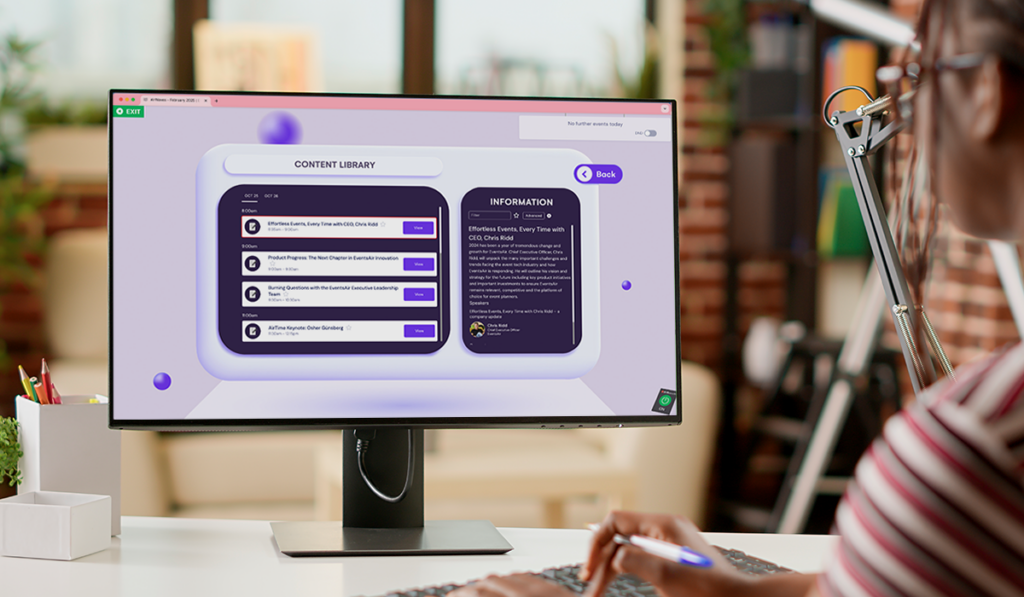Here Are 10 Event KPIs You Need To Be Tracking

Every planner knows that measuring event success is crucial, but which metrics really matter?
In this EventsAir article, we dive into the top ten event KPIs that every organizer should track. From registration conversion rates to attendee satisfaction scores, these key performance indicators provide valuable insights into your event’s effectiveness.
We’ll explore why each KPI is important, how to calculate it, and what the numbers really mean for your event strategy.
10 Event KPIs you need to be tracking
1. Registration conversion rate
This metric shows you what percentage of your marketing reach converts into actual registrations.

To calculate it, divide your total registrations by your total marketing reach, then multiply that number by 100. You can also calculate it on a channel-by-channel basis.
For example, say your multi-channel strategy data looks like this:
- Your registration site saw 1,500 organic visitors
- You sent out emails to 5,000 people
- Your LinkedIn Ads campaign reached 3,000 people
That’s a total reach of 10,000 people. If 500 people eventually register, that means your registration conversion rate is 5%. However, if 300 registrations came from one of your LinkedIn ads, that channel has a much higher conversion rate of 10%.
Industry benchmarks vary widely by event type and marketing channel. Email campaigns typically convert at 2-3%, while targeted landing pages might hit 5-10%. Low numbers? Your event proposition, pricing, or targeting might need work. High numbers? Document that marketing mix – it’s working.
2. Attendance rate
Your attendance rate is the percentage of registered attendees who actually show up. The math is straightforward – divide your actual attendees by total registrations and multiply by 100. If 400 people show up out of 500 registrations, that’s an 80% attendance rate.

In-person events typically see 60-80% attendance, while virtual events often see 40-60%. Workshop rates can vary significantly based on content, audience, and a ton of other factors.
Track this number across all your events and you’ll spot patterns. Weather impacts outdoor events. Monday mornings see more no-shows than Thursday afternoons. Free events have lower attendance rates than paid ones.
Use these insights to schedule smartly and fine-tune your planning and forecasting.
3. Cost per attendee (CPA)
This metric reveals the price tag of getting each attendee through your door. To calculate, add up everything – venue, catering, staff, marketing, tech, swag – and then divide by your total number of attendees.

If your event costs $50,000 and draws 200 people, your cost per attendee is $250. There’s no universal “good” number here – a corporate gala might justify $500 per person while a community workshop needs to stay under $50.
Breaking down CPA by expense category reveals your budget-drainers.
With an event budgeting tool like EventsAir, you can track expenses across key categories like venue, F&B, marketing, and tech., for example. This granular view helps identify where costs are ballooning and where you might find efficiencies for your next event.
4. Net Promoter Score (NPS)
This metric tells you whether your attendees will promote or detract from your future events:
- Promoters (score 9-10): These attendees actively recommend your event
- Passives (score 7-8): These attendees are satisfied but unenthusiastic
- Detractors (score 0-6): Unhappy attendees who might discourage others from attending
Calculate it by asking one simple question after your event: “On a scale of 0-10, how likely are you to recommend this event to a colleague?” Subtract the percentage of Detractors from the percentage of Promoters to get your NPS.

The score ranges from -100 to +100. For events, anything above 0 is positive, +20 is considered good, and +40 or higher is excellent. Track this score over time – it’s your early warning system for attendee satisfaction and a strong predictor of future event success.
5. Revenue per attendee (RPA)
This metric shows you how much money each attendee brings to your event. Calculate it by adding up all revenue sources – ticket sales, sponsorships, merchandise, food and beverage sales, and exhibitor fees – and divide by your total number of attendees.

A conference generating $100,000 with 200 attendees has an RPA of $500. You can compare this against your CPA to understand your profit margin per person, or you can break it down by revenue stream to help answer some really important questions like:
- Is sponsorship revenue underrepresented?
- Did we sell too many GA tickets?
- We add-ons priced effectively?
While there are lots of ways to track these metrics, event management platforms help make this important data accessible. For example, EventsAir’s financial widgets give you real-time visibility into your revenue streams with dedicated displays for:
- Profits
- Expenses
- Income
…and more.
When everyone from marketers to finance teams has access to real-time performance data, your team can make smarter decisions about pricing, promotions, and event strategy.
6. Session attendance rate
This metric shows you which parts of your event program are actually drawing crowds. Track attendance for each session, workshop, or breakout and divide by total event attendance. If 160 people attend a keynote out of your 200 total attendees, that’s an 80% session attendance rate.

You can compare these rates across your program to spot patterns in speaker and format preferences.
With EventsAir’s session scanning features, you can capture attendance data using QR codes, beacons, or self-check-in options through the attendee app. This automated tracking shows you exactly how different audience segments engage with your sessions, which makes optimizing your program mix much easier.
7. Sponsor satisfaction score
This metric offers hints about whether your sponsors will come back next year – and how much they’ll spend.

Survey your sponsors post-event using a 1-10 scale across key areas: lead quality, booth traffic, networking opportunities, and overall ROI. Average these scores for each sponsor, then calculate your overall sponsor satisfaction score by averaging all sponsor scores. Track both the overall score and individual component scores.
Wondering how to improve this metric? Here are some common challenges (and solutions):
- Low scores in lead quality? You might need better audience targeting or matchmaking tools.
- Poor booth traffic? Rethink your floor plan or session scheduling.
- High overall scores but complaints about networking? Consider using event management platforms like EventsAir that offer dedicated sponsor portals, automated lead capture, and custom meeting matching features to boost sponsor-attendee connections.
8. Social media engagement rate
If social media is part of your event strategy, this metric reveals your digital footprint and audience reach.
Track total engagements (likes, shares, comments) across platforms, mentions of your event hashtag, and user-generated content during your event. Don’t just count raw numbers, though – measure engagement rate by dividing total engagements by your follower count.

For example, a post reaching 10,000 people with 500 engagements has a 5% engagement rate. Use this number to track your most valuable channels and your most effective content formats for cost-effective social media marketing.
9. Lead generation rate
This metric helps you demonstrate ROI to your clients and their sponsors – a huge deal when you’re planning B2B events. To calculate it, divide the number of qualified leads by total attendance. If your client’s 500-person trade show generates 100 qualified leads, that’s a 20% lead generation rate.

You can make this metric much easier to track with event management platforms like EventsAir. We offer automated lead capture technology that lets you focus on event execution while giving clients detailed lead reports and ROI data they can take back to leadership.
10. Event app adoption rate
Last up? Event app adoption. This metric tells you whether your event tech is actually being used.

The idea is pretty simple – a good event app can dramatically improve the experience for planners, attendees, sponsors, and presenters… but only if they actually use it. Calculate the adoption rate by dividing the number of active app users by total registrants and multiplying by 100.
If 400 out of 500 registrants actively use your app, that’s an 80% adoption rate.
Elevate your next event with EventsAir
Tracking event KPIs is vital for understanding and improving event success. By focusing on high-impact KPIs, leveraging real-time data, and gathering post-event feedback, organizers can refine strategies and boost future performance.
EventsAir provides powerful analytics and reporting tools that help event professionals monitor and analyze KPIs seamlessly. From attendee engagement to ROI, EventsAir ensures that you have the insights needed to make informed, data-driven decisions that enhance event outcomes.
Enhance your event management strategy with EventsAir.



